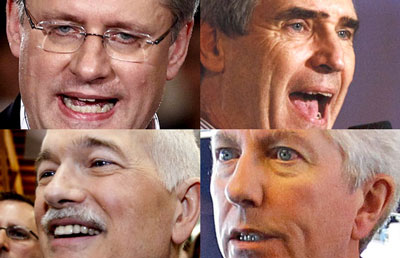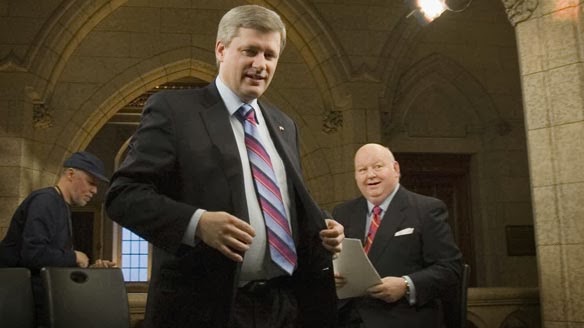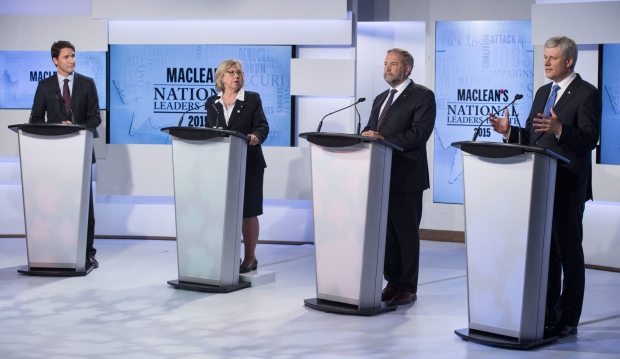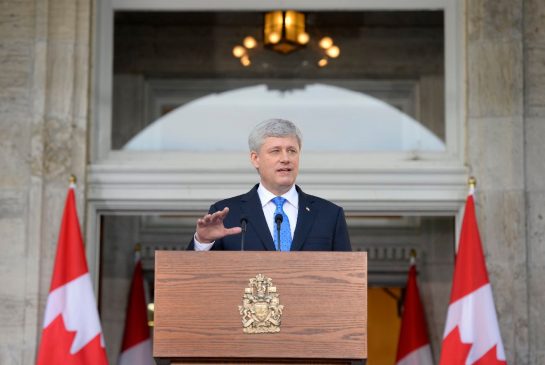
Conservative Majority: Five Months Later; The Reason Why it Came to Be

Media Driven NDP Hope Drove the Masses to Vote Conservative
From the Orange Wave to the speculation over a majority government, the media has played a large role in influencing the polls. From giving jack Layton a needed lift in the polls to demolishing the once mighty Liberals down to nearly a rump. The media has been there, through all of it, supposedly objective, but the quest for the perfect headline sealed the fate of the 2011 election campaign.
Micheal Ignatieff and his Liberals were never given their chance to make a difference, and with a platform that brought striking similarities to what an NDP government might have done on a more moderate level, the Liberals may have sealed their fate as they went from a party on the center-right to a party on the center-left. From the pleas for social justice and equality to the aid for students and seniors, the Liberals tried to sell the NDP dream dressed in old time costumes and it failed. However, this is not the main reason for which the Liberals lost.
If we look at a map of how the election turned out, Quebec was the only place of major gains for the NDP. In fact, had the Bloc Quebecois maintained its stronghold, the NDP would have only had 45 seats which would have put it in competition with a powerful Bloc Quebecois for the second place finish. So where does this leave the rest of Canada? The last Liberal stronghold was in Ontario and as soon as the media pronounced that the Orange wave had the potential of winning big and spreading, businessmen, centrists, red Tories and blue liberals fled the once moderate alternative and went straight to the Conservatives.
While vote splits may have also been a factor, in relation to the exodus of the Liberals to the Conservatives when the Orange Wave came and 100 seat forecasts were modeled, we can say that vote splits had dismal value. In fact, we can even say that the Conservatives got their majority to prevent the NDP from coming to power.
Seeing a 103 seat NDP opposition seems strong. However, it is built mostly of Quebec and not the rest of Canada. While the NDP did make gains outside of Quebec, these gains were marginal in relation to the gains made by the Conservatives as Canadians saw an option between a radical left wing NDP party and a diluting center-right wing Conservative Party. These gains were so marginal that the NDP, relatively speaking, saw no seat change outside of Quebec.
It was the media’s coverage of the NDP wave that gave hidden leftists a reason to come out and the extremity of the charge forced the rest of the population of Canada to vote with the status quo which was seen as a harmless and experienced sitting. It was the idea that the NDP could form a government that turned the bulk of the anti-conservative movement on the centrist side of the country into Conservative votes. It played directly into the Conservative narrative: We need a strong and stable majority government.
It was also the media’s speculation and constant polling that gave the Conservatives the momentum to win their majority with the help of the NDP’s uprising. Many NDP-ers say that the result was bittersweet, however, if you look at the numbers, the NDP made no realistic gains and only sent what was left of the Liberals to the Conservatives to prevent any form of NDP government or any form of minority government where the reckless NDP could hold a grasp of power.
The Liberals’ Biggest Mistakes
The Liberal Party is still reeling from the blow of the last election. As a traditionally business-based party, coming out with corporate tax hikes was a very bad move to play. It allowed the Conservatives to label the Liberals as Tax and Spend which in politics is often a bad thing. Not only were they able to label the Liberals as tax and spenders, they had footage where Ignatieff didn’t rule out a GST hike and an NDP-based platform that the Liberals were running on to tear apart.
In essence, the Liberal mistake was that it took on the Conservatives by playing a moderate opposite card, which the NDP have done with every government for years.
It was inevitable that the Liberals would be slowed to a financial crawl. When they were in power, Quebec and Ontario was their home and at the time, Ontario and Quebec had the strongest economies in the country. Today, and for the next couple of years, the west has seen rapid and steady growth as Ontario is now receiving equity payments.
With the money and businessmen becoming stationed out west, and with future economic prospects looking west, naturally businessmen had the option between a broken and corrupt Liberal party which represented the breaking east, or a new and vibrant party which is rapidly growing in momentum, support, and political funds from the west. When we put it that way, the decision is very simple.
If the Liberals would have realized this shift and done something about it, they could have survived this election. Instead, they decided to veer left and suspect that the majority of the country would veer with them – a big miscalculation on their part.
If the Liberals would have restructured as a grass roots realist party with the aim of cutting taxes for families and representing families, they wouldn’t have lost their momentum and steam to the Conservatives and NDP and we all know how that turned out.
NDP Strength is Concentrated and Fundamentally Weak
In essence, the reason for this election result is very clear and very strong. Quebec is no longer a separatist nation and the amount of formidable separatists is fumbling by the day. Realistically speaking, the province has spent years going through the same vicious circle that has gotten them no where closer to the goal and has taken a real toll on the provinces economy and services. In this case, the Bloc Quebecois ran out of steam and unlike the rest of Canada, Quebec is fundamentally left-wing by nature which left them with only the NDP as an alternative to the Bloc Quebecois.
If we look at the rest of the country, where the majority of Canadians can classify themselves as blue Liberals or red Tories, it is becoming clearer and clearer that an NDP government is not in their best interests and that they needed someone to back that would effectively destroy the NDP and that was the ruling Conservatives.
The NDP can continue to try to move to center, but we have already heard most of their inner talk and their centrist camouflage will never change who they really are and what they would do with this country – a plan which was overwhelmingly rejected in the last election as Canadians voted Conservative to say no to the NDP.
A Final Second Chance
It is for these reasons that the Liberals can still have a lot to be happy about. With the NDP showing their true, reckless, and clueless colors, the Liberals may have one last chance to present themselves as an alternative. First, they need to be familiar, and second, they need to be liked. This means: No more flirting with the left, no more rants on the center, and no more condescending assumptions that people will follow you where you go. The 2011 election sent a message that no pundit would say as it doesn’t fit their blueprint for tomorrows headlines. The reality is, Canadians voted no to the NDP and reluctantly voted Conservative to prevent any more damage from being done.
With this election as a template for the next. If the trend continues and the Liberals fail to recapture the hearts of Canadians, we can expect a strengthened Conservative Majority Government as Quebec seats start to waver in support of the Conservatives with the rise of Francois Legault and the Quebec Coalition – a right-wing ideological movement who have endorsed the Conservatives. The NDP gains in Quebec are temporary and anyone with enough experience will know that Quebec is like a lottery ticket when it votes, any outcome is possible at any given moment.
You might also like to read: Clueless



